What are difficult conversations?
Difficult conversations involve addressing differences of opinion, emotional issues, sensitive subjects or other potential reasons of conflict. It's anything we find hard to talk about. They are challenging because they require us to navigate through discomfort, uncertainty and a wide range of complex emotions.
For example:
-
Sharing criticism
-
Performance problems
-
Setting boundaries
-
Clarifying responsibilities
-
Asking for a raise
Difficult conversations are:
-
Uncomfortable
-
Stressful
Normal conversations turn difficult because of:
-
Misunderstandings
-
Unspoken issues
-
Pride and ego
Addressing difficult conversations openly and honestly can lead to:
-
Greater understanding
-
Stronger relationships
-
A better outcome
What is an example of a difficult conversation?
Here are some examples of difficult conversations:
-
I have to tell my team that we are downsizing and some people will be asked to leave.
-
I was passed up for a promotion and don't understand what went wrong.
-
I have to give feedback to my manager about the way she handles disagreements.
-
My spouse takes me for granted. He's never around to help.
-
I need to inform my client that their expectations are unrealistic.
-
My direct report isn't meeting performance expectations.
-
My colleague is rude, mean and unapologetic. His behavior is completely unacceptable.
-
My performance evaluation is not fair. It's biased and does not include important data points.
-
I need to define boundaries with my mother-in-law as she interferes too much with our family decisions.
Why difficult conversations are important?
Difficult conversations are important because:
-
Issues left unaddressed escalate over time. What was once a manageable problem can grow into a much larger issue if not addressed on time.
-
Missed opportunity to address concerns, clarify misunderstandings and agree on a common solution.
-
Constant worry about unresolved issues can take a toll on your mental health and lead to increased stress, anxiety and even feelings of helplessness.
-
Reinforces avoidance tendency which makes you more prone to ignore problems rather than confront them directly and constructively.
-
Lost opportunity to build communication and conflict resolution skills which are essential to succeed and thrive at work.
-
When important issues are being ignored or swept under the rug, it can erode trust, build resentment and damage relationships.
Why do I avoid difficult conversations?
We avoid difficult conversations because of how we think about them. It's much easier to avoid emotionally draining and mentally exhausting situations than step right into them consciously.
Here are the 8 key reasons that explains why we tend to avoid difficult conversations:
-
Don't want to hurt the other person's feelings.
-
Don't feel comfortable expressing our emotions or handling the emotions of the other person.
-
Worry that the discussion will spoil our relationship or simply make the matter worse.
-
Believe we lack the communication skills to express ourselves clearly and fear saying the wrong thing.
-
Culture or upbringing has taught us to avoid any type of conflict.
-
Past experiences can stir up negative emotions which tell us to avoid the conversation altogether.
-
Fear of not being accepted or understood or being perceived negatively by the other person.
-
Hope that the issue will resolve itself over time.
Why are difficult conversations hard?
Difficult conversations are hard because of these 4 factors at play:
#1 Different perceptions
We think we're right and the other person thinks they're right. What goes on in our head makes sense to us, but we often can't see what others are thinking. This makes it hard to realize that another person's viewpoint might also make sense.
I am right. She's wrong.
It makes sense. Why can't he see it?
Differences in perception happen because:
-
We may have different information and knowledge about the specific event.
-
We may interpret the event differently based on our past experiences, upbringing, cultural background and many other factors.
#2 Automatic storytelling
When others don't explicitly communicate their intent, our mind, which is a meaning-making machine, attaches a story to it. We assume intent based on how others' behavior impacts us. But our made up stories about other people's intentions are often inaccurate and unreliable.
I feel offended. She intended to insult me.
He disagreed with me only because he wanted to prove his smartness.
This storytelling is often fast and automatic—we don't realize that our conclusions about others are merely assumptions and may not be grounded in reality.
#3 Nasty feelings
Our emotions can sometimes get the better of us. Strong emotions, especially negative feelings, can cloud our judgment and prevent us from thinking straight. When emotions take the front seat, we lose our ability to think, communicate, problem solve and work together. Instead of handling the situation calmly, we may turn to force, violence, aggression, attack, sarcasm, or other such destructive behaviors.
You're such a loser!
This is ridiculous!
Give me a break!
Losing control of emotions shuts down brain functions, narrows peripheral vision and makes us blind to other people's ideas and opinions.
#4 Tendency to blame
When we are opinionated or judgmental, finding the bad guy or the person who's to blame becomes our primary motive instead of identifying ways to learn, improve and get better. Instead of resolving our disagreements, mistakes and differences of opinion, we get stuck in blame games and are unable to move forward. Learning and fixing the problem takes a back seat.
It was your mistake.
She's the culprit.
Pointing fingers and playing blame games does not resolve the conflict, it only makes it worse.
What are 6 rules of effective communication?
Here are the 6 rules of communication that are essential to productive crucial conversations:
Rule 1: Don't make it personal
Keep the discussion about the specific behavior, don’t make it about the person. The person on the other end of the conversation can sense you are being judgmental within the first few minutes based on your tone and body language. This makes them either shut down—assuming nothing they say will change your mind—or turn the conversation into an argument—to prove they’re right and you’re wrong.
Your purpose is not to make them feel bad by attacking their character or challenging who they are—that only hurts their ego which makes them resistant to whatever you say.
For example:
Instead of: You’re dominating.
Say this: When you interrupt others and don't let them speak, it makes them think that you don’t care about their opinion.
Instead of: You're rude.
Say this: When you speak to others in a loud voice or show your anger, you lose trust and respect.
Instead of: You're dumb.
Say this: I understand that some things may be difficult for you. But you've to ask questions or seek clarifications when you don't get them. We have discussed this requirement multiple times and every time I get the feeling that you've understood it well, but then a few days later we are back to square one.
The first statement will immediately put the other person on the defensive while the second one gives them an opportunity to engage in a constructive dialogue.
Rule 2: Practice clear and concise communication
Keep it short. Say what you have to say without beating around the bush. You need to be specific to help them understand your concern without drowning them in unnecessary information. Typically, an example or two should be sufficient to help them connect and make sense of your inputs.
Example 1
Situation: Your manager has a tendency to call late in the night which disturbs evening time with your family.
Don't: Blabber about it or expect them to read between the lines without explicitly stating your concern.
Do: Tell them that their calls in the night make it difficult for you to spend quality time with your family and why you need that downtime to make a productive contribution at work.
Example 2
Situation: Your team member has the habit of disregarding others' ideas and opinions.
Don't: Share general advice on seeking diverse viewpoints or encouraging more participation from others in discussions. They're most likely to ignore it.
Do: Share examples from previous discussions or meetings where they ignored others' inputs. Ask them how they can be more inclusive going forward.
Example 3
Situation: You're passed up for a great opportunity you think you deserved.
Don't: Complain to your manager about their decision or show resentment for not getting what you wanted.
Do:Express your disappointment, but show respect for their decision. Try to understand what you lacked and how you can cover up those gaps to get such opportunities next time around.
Rule 3: Focus on the impact, not the emotions
Describe the impact of a particular behavior, action, or inaction. Speaking about the impact engages a portion of the brain that makes others actively seek solutions as opposed to making it about the emotions which inhibit their ability to think clearly and makes it difficult for them to rationalize the situation.
For example:
-
If a coworker has the habit of using offensive language at work, instead of expressing your disgust, tell them how it impacts your collaboration.
-
If your manager keeps canceling your one-on-one meeting, instead of showing your frustration, explain why not having such discussions limits your growth.
-
If a team member tries to take credit for your ideas, instead of being annoyed, make it clear that you'll stop sharing your ideas with them if they continue to behave this way.
Focusing on the impact does not mean that you disregard your feelings or shouldn’t mention them at all. However, keeping the focus on the impact while adding emotions to the mix to guide the conversation is a super effective strategy to gain control of the situation and engage others with the intent of finding a mutually agreeable solution.
Rule 4: Clarify your intent
In a difficult conversation, the likelihood of someone misinterpreting your purpose or intent is quite high. That's why it's crucial to state your intent explicitly. To do this, use a contrasting statement.
A contrasting statement is a don't/do statement that:
-
Addresses their concerns or misunderstanding about your intent (DON'T: What you don't intend).
-
Clarifies your real purpose (DO: What you do intend).
For example:
[Don't] I am not trying to say that your idea isn't worth discussing. I think many of the points you have raised are extremely valuable.
[Do] However, I want to ensure that we also consider other alternatives before making a decision.
[Don't] It's not that I don't value your work or the effort you've put into this proposal. I can see that your research is extensive and covers all major areas.
[Do] However, I think it will be useful to take the recent shift in org strategy into consideration and re-evaluate this proposal.
[Don't] My goal is not to blame anyone for the mistakes that happened with our last project.
[Do] My intent is to learn from that experience to see how we can proactively prevent such mistakes from happening again.
Rule 5: Seek first to understand, then to be understood
If you want others to hear your viewpoint, make them feel heard and understood first. Don't try to force your views or assume their intent. Give them an opportunity to share how they view the situation, what's their thought process or what made them act a certain way.
Repeating what you wish to convey will only lead to pushback. Others are more likely to listen to you when you listen to them first with the intent to understand and show respect for their views.
Practice effective listening:
-
Seek clarity and invite them to talk by asking open ended questions.
-
"Tell me more..."
-
"Help me understand ..."
-
"Describe to me ..."
-
"What do you think about ..."
-
“I would like to understand where you are coming from on …”
-
"Can you share a little more about how you see things …?"
-
-
Go beyond the words to the non-verbal communication—tone of voice, hand gestures and body language.
-
Don't interrupt or get defensive to get your message across. Share what you wish to convey by speaking up when they're done.
-
Don't try to hog the spotlight. The conversation is not about you.
-
Acknowledge their feelings and point of view. Acknowledging does not mean that you agree with them. It simply means that you understand how they feel.
-
"From what you’ve told me, I understand that you feel overwhelmed."
-
"I see you are getting really stressed by this."
-
"If I’m understanding you correctly, you are mad right now for ...."
-
-
Discuss what’s relevant to the current conversation. Stay on track. Avoid going off-topic.
Rule 6: Maintain your calm
If the other person turns defensive or blows things up, don't react to their overreaction. Try to get the conversation back on track by staying calm, contrasting, asking questions and showing curiosity to understand their thoughts and feelings.
Even after trying different strategies to make the conversation productive, if things stay the same or get worse, ask them to take a break and regroup at a different time.
For example, you can say:
-
It appears that you need more time to process what we discussed. Can we meet again later once you've had a chance to think about it?
-
Will it be helpful if you get some time to think about what we discussed? We can always meet later again.
How do you handle a difficult conversation?
To handle difficult conversations follow these 5 steps:
Step 1: Spot difficult conversations
Unless you identify and acknowledge the strong emotions that a difficult conversation tends to evoke, you'll keep on avoiding it. The stress, anxiety, fear and the mental effort required to deal with the circumstance can be quite taxing on the mind. It can make you put off or delay the difficult conversation because you don't want to experience the pain, disappointment, shame, failure or other such negative emotions.
Not consciously acknowledging your feelings will make your brain apply the default shortcut and skip anything discomforting.
Catch yourself when you feel:
-
Strong emotions like fear, hurt, anxiety, anger, shame or being wronged.
-
Physical signs like tightness in the chest, increased heart rate or any other physical discomfort.
Paying attention to these cues and recognizing their signs gives you an opportunity to pause, step back and consider a more rational approach as opposed to letting your fight-or-flight mechanism take over.
Then, name the emotion to tame the emotion. In other words, say to yourself, out loud, what negative emotion you’re experiencing, as you’re experiencing it.
For example: When you feel a negative emotion like fear, say “I’m experiencing fear.”
Simply naming the emotion is going to calm you down. This technique introduced by psychologist Dan Siegel creates a bit of space between you and that emotion. Naming your emotions tends to diffuse their charge and lessen the burden they create.
Step 2: Shift towards acceptance
We are good at cooking up excuses for anything we want to avoid. These excuses shield us from feeling bad about ourselves because they give us a reason to justify our avoidance tendencies. But, using justifications for not having difficult conversations don't serve us well and they definitely don't help those around us.
Avoidance only makes the problem worse as you end up spending more time and energy in resolving the conflict. To shift towards acceptance, catch yourself making these excuses.
Watch for phrases like:
-
Definitely tomorrow, it can wait
-
It's not that big a deal
-
It's not worth arguing about
-
I'll bring it up next time
-
I don't have time to address it
-
It'll be ok in a few days
Replace them with phrases:
-
It can't be delayed any further
-
It's important to have this conversation
-
I must share my opinion
-
I must act on it now
-
There's no better time than now
-
It won't resolve itself
Step 3: Examine your motive
Your motives matter when it comes to communicating effectively. Short-sighted and self-centered motives impede constructive dialogue. They shift the focus of the conversation from shared goals towards individual priorities, opinions and preferences.
Healthy motives
-
Achieve better results
-
More success for everyone involved
-
A healthier working relationship
-
Align on mutual goals
-
Learning and gaining knowledge
Unhealthy motives
-
Be right
-
Look good
-
Save face
-
Try to win
-
Punish or blame others
Step 4: Frame it right
Difficult conversations when not framed right can make the other person flip and get on the defensive side. Using a judgmental language or making conclusions without corroborating facts gives the feeling of being attacked which can get their amygdala into a fight-or-flight response. Such conversations can suck time and energy from both of you without aligning on any significant outcomes and they often tend to lead to confusion, anxiety, fear and resentment.
To have a productive conversation, you need to apply the difficult conversation formula. Here's how it works:
{Situation + Observation + Impact} + {Question + Silence} = Mutually Agreeable Outcomes
Situation: What happened?
Observation: What did you observe without judgment or opinion? Separate facts from feelings. Feelings lead to judgments, conclusions and attributions. Facts are observations without judgments.
Impact: What's the possible impact on you or others?
Question: How do they see it? Make it safe for them to share their views. Ask follow-up questions to seek clarifications, explore solutions and keep the conversation on track.
Silence: Embrace the uncomfortable silence, don't fill it with words. Give them time to process the information and come up with a more thoughtful response.
Step 5: Mentally prepare before stepping in
You need to stay calm and centered during the conversation. Athletes, comedians, surgeons, actors, theater artists and many other successful people use pre-performance routines to focus attention, limit distractions and get into a confident mental state. Performing a routine before getting into a stressful situation can reduce feelings of anxiety and improve performance.
Apply the right practices that will help you refocus and enable you to handle unexpected reactions that may come your way in a relaxed and confident manner.
What's a feedback loop in crucial conversations?
Peter Drucker, management guru said, “What’s measured improves.” This is true for everything in life. Without the attitude to learn, adapt and make corrections along the way, you cannot master difficult conversations and handle them well. A great way to do this is to implement a strong feedback loop in your process.
Reflect on the conversation and answer these questions:
-
How did you feel after the conversation?
-
What was the outcome of the conversation? Did you accomplish your goals?
-
Was the conversation helpful? In what way?
-
Was the conversation unhelpful? In what way?
-
What did you do right?
-
What did you do wrong?
-
Things to
-
Stop doing
-
Continue Doing
-
Start Doing
-
What is a contrasting statement?
In a difficult conversation, the likelihood of someone misinterpreting your purpose or intent is quite high. That's why it's crucial to state your intent explicitly. To do this, use a contrasting statement.
A contrasting statement is a don't/do statement that:
-
Addresses their concerns or misunderstanding about your intent (DON'T: What you don't intend).
-
Clarifies your real purpose (DO: What you do intend).
For example:
[Don't] I am not trying to say that your idea isn't worth discussing. I think many of the points you have raised are extremely valuable.
[Do] However, I want to ensure that we also consider other alternatives before making a decision.
[Don't] It's not that I don't value your work or the effort you've put into this proposal. I can see that your research is extensive and covers all major areas.
[Do] However, I think it will be useful to take the recent shift in org strategy into consideration and re-evaluate this proposal.
[Don't] My goal is not to blame anyone for the mistakes that happened with our last project.
[Do] My intent is to learn from that experience to see how we can proactively prevent such mistakes from happening again.

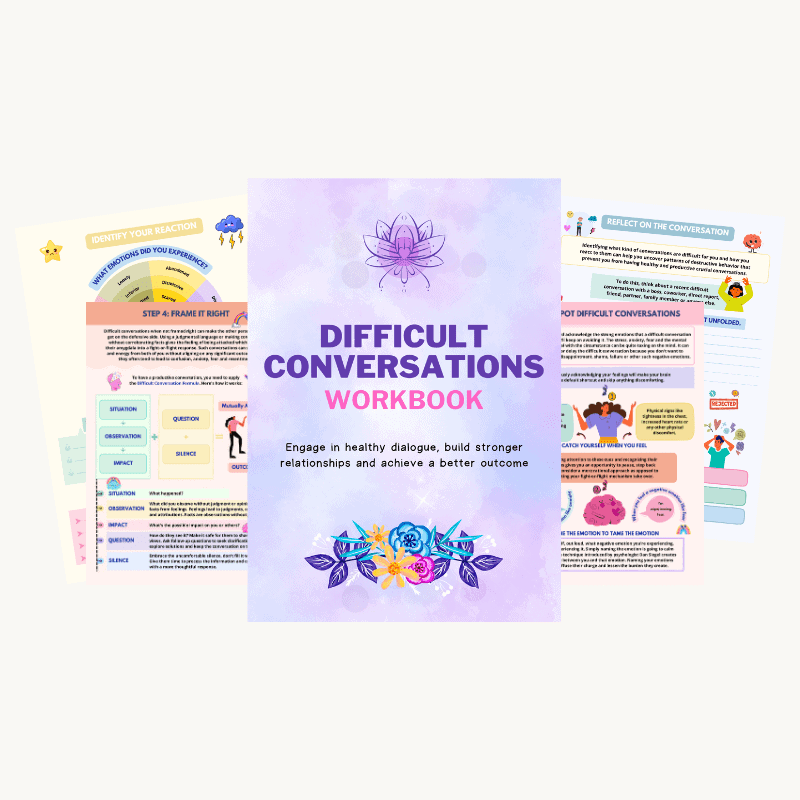
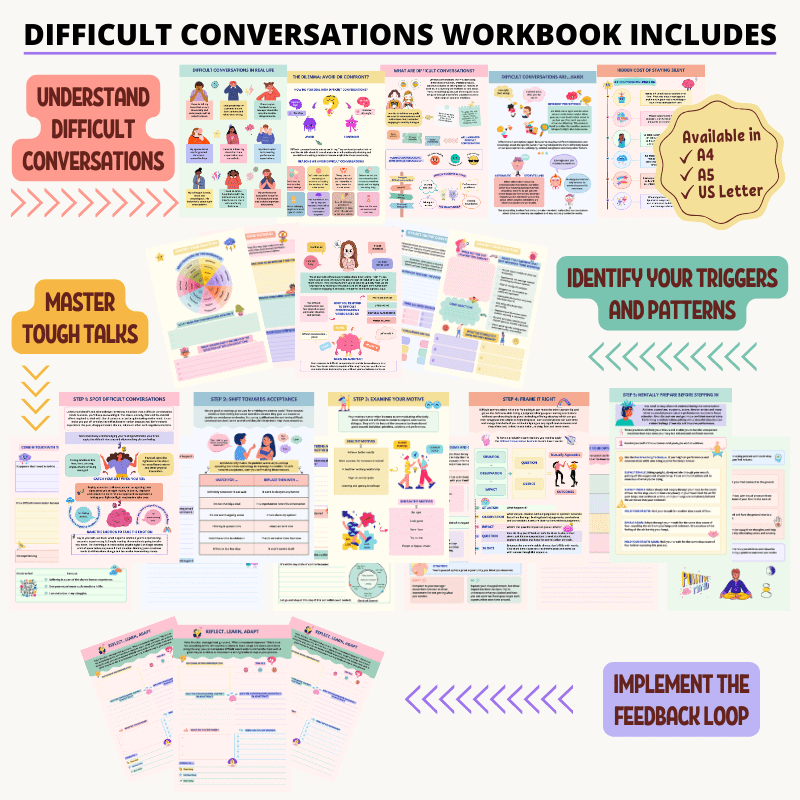
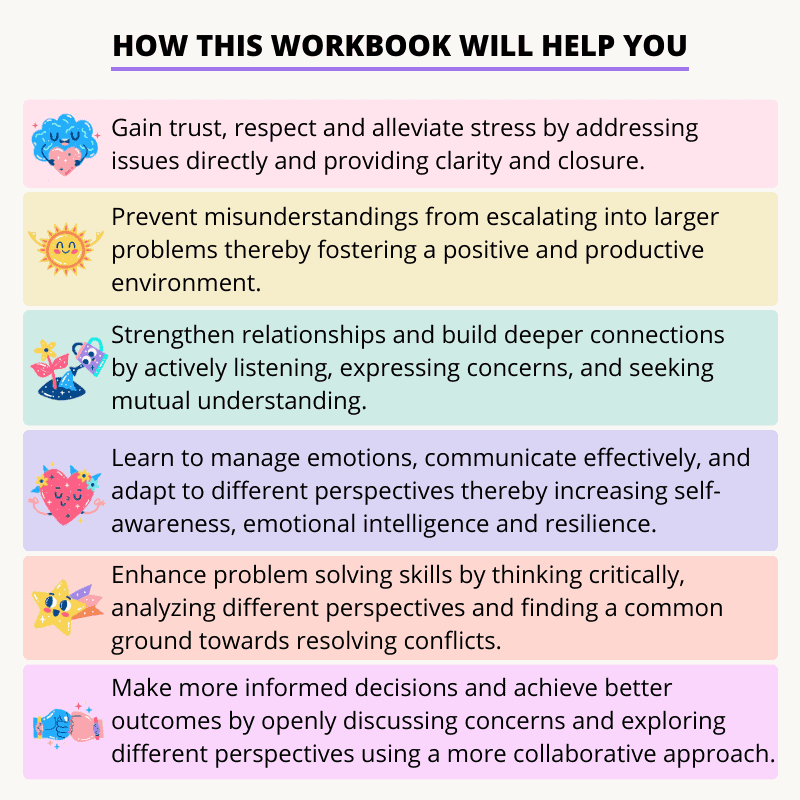
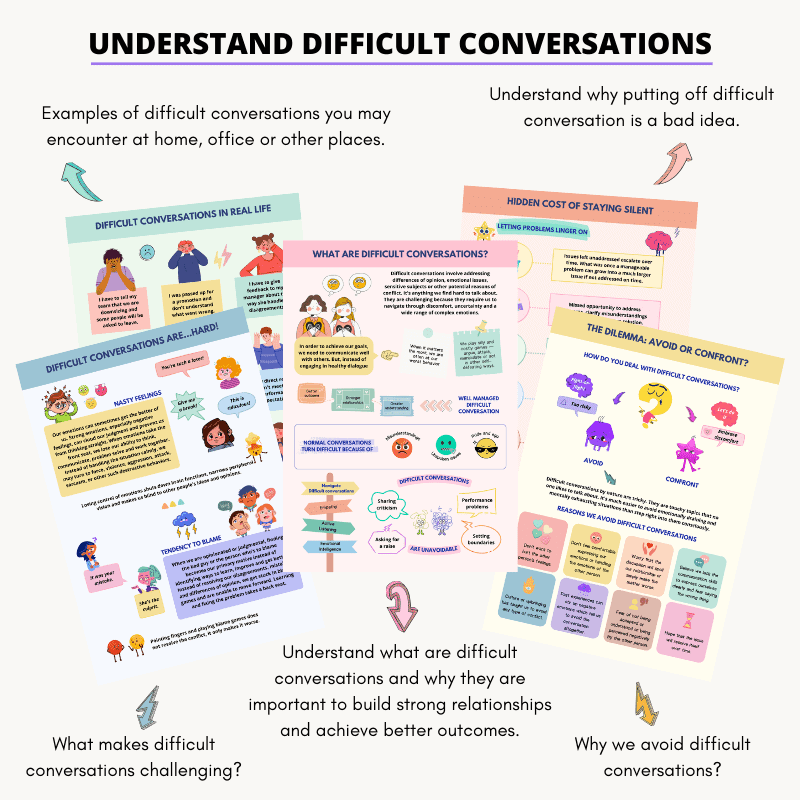
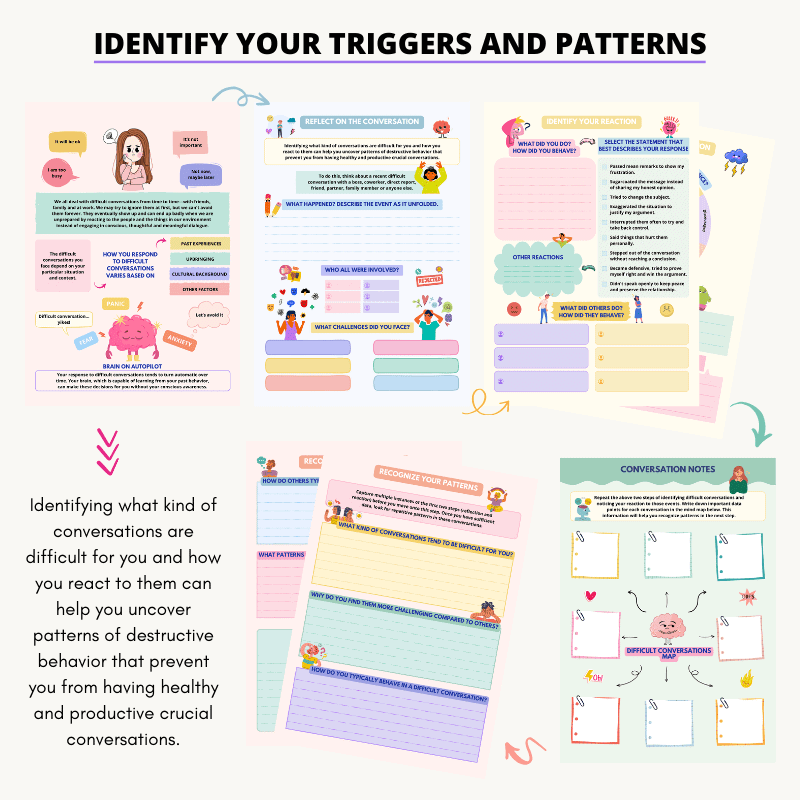
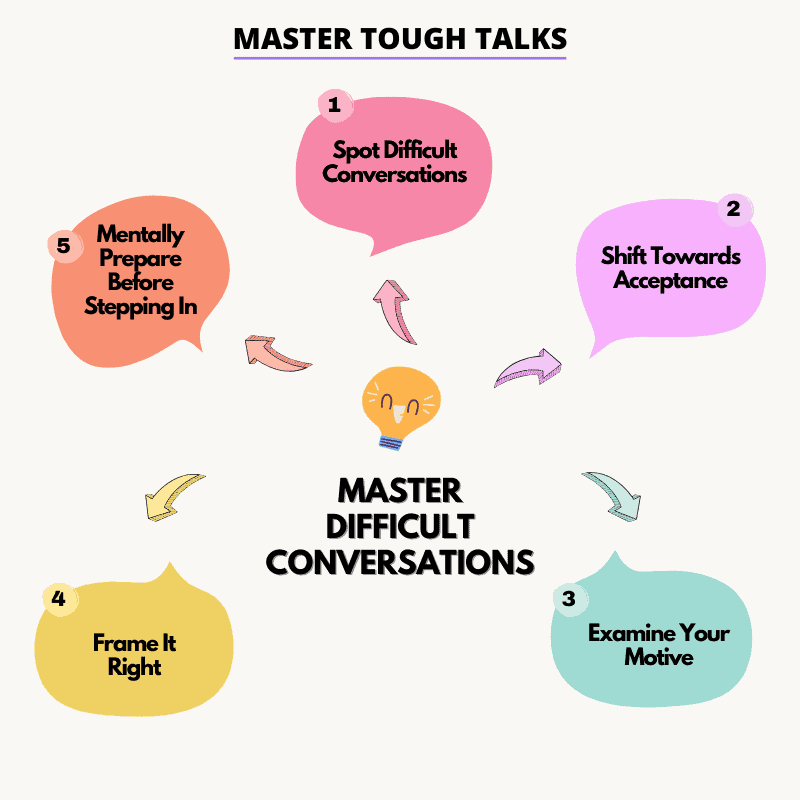
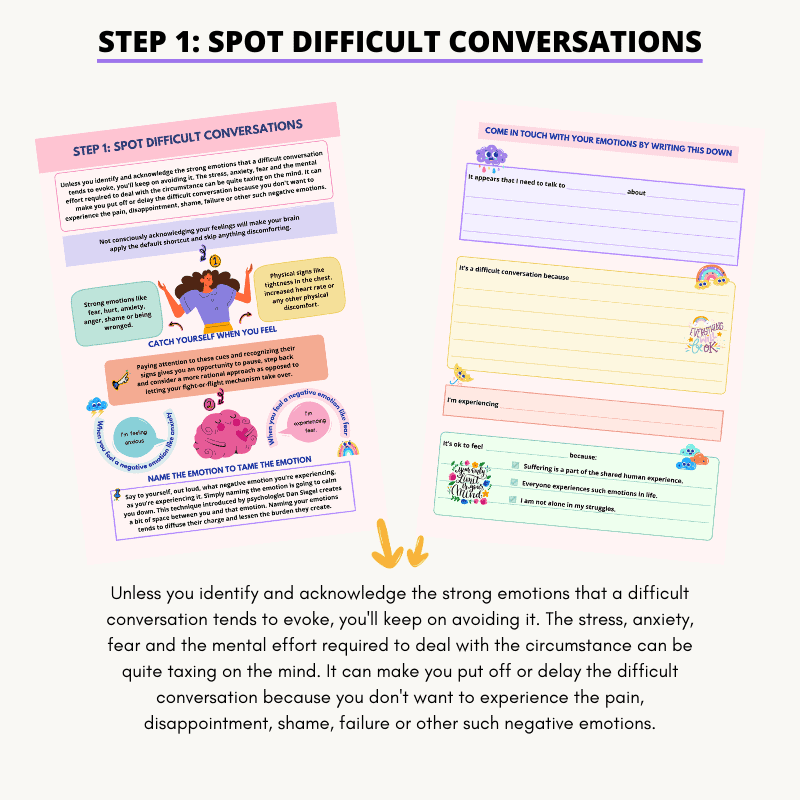
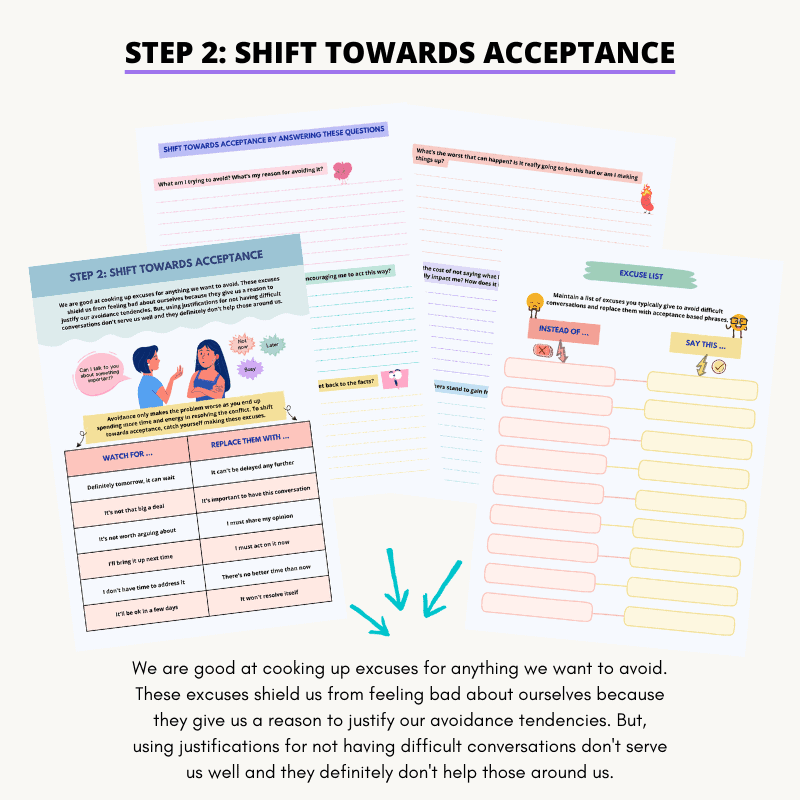
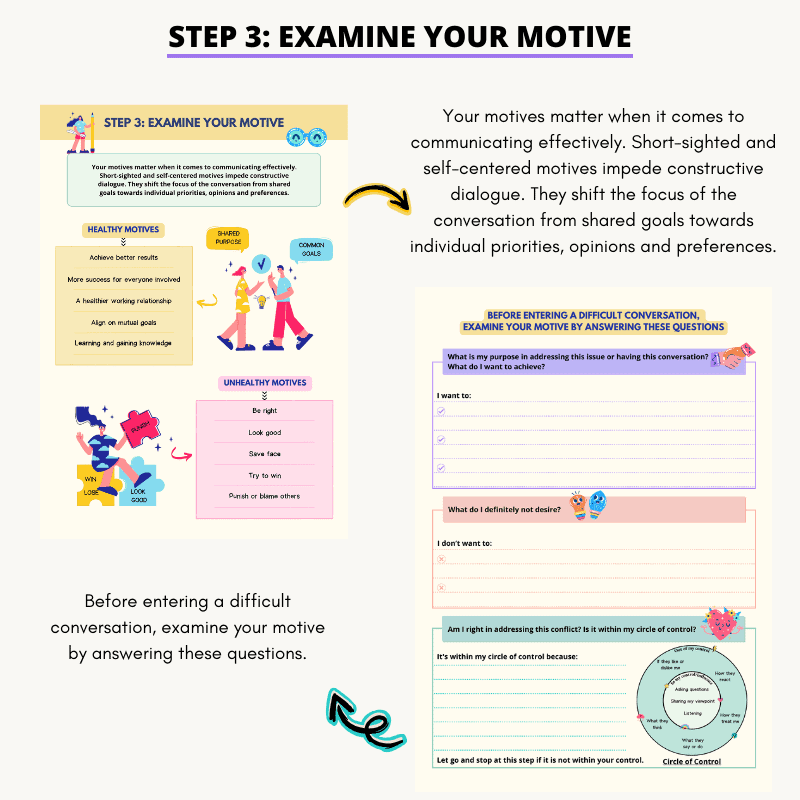
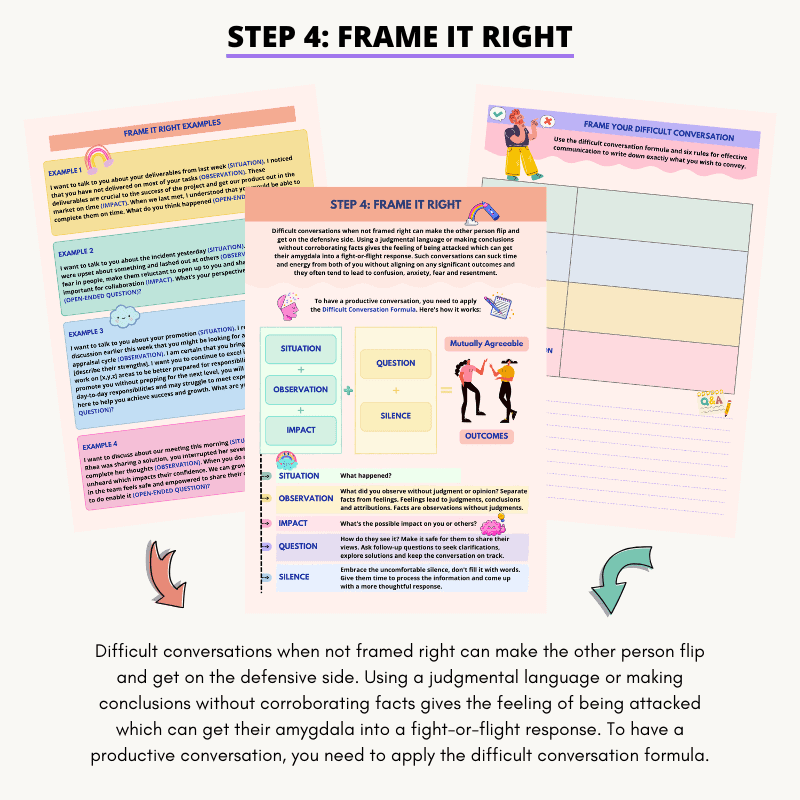
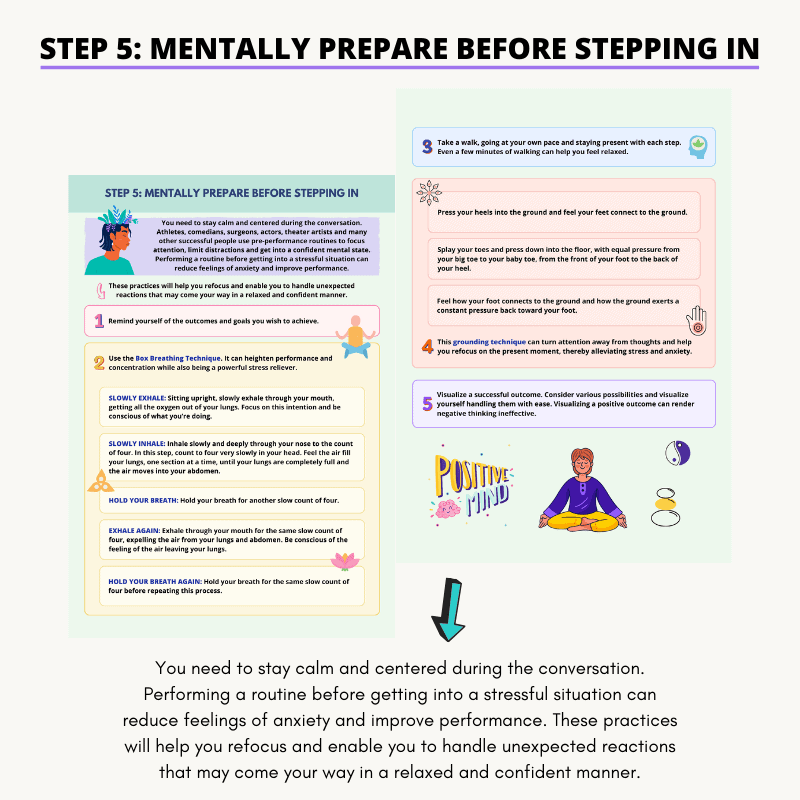
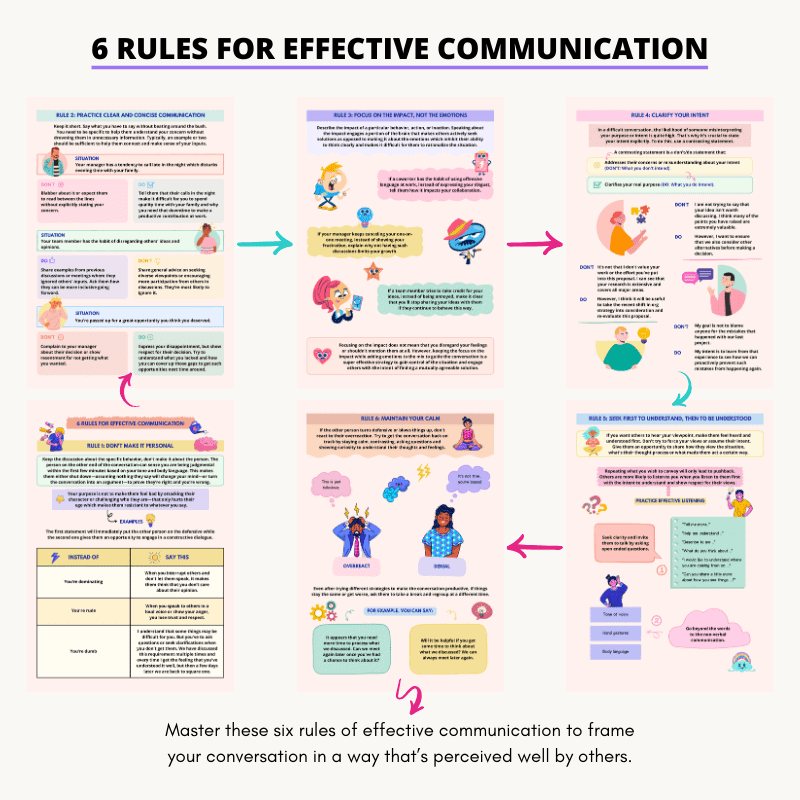
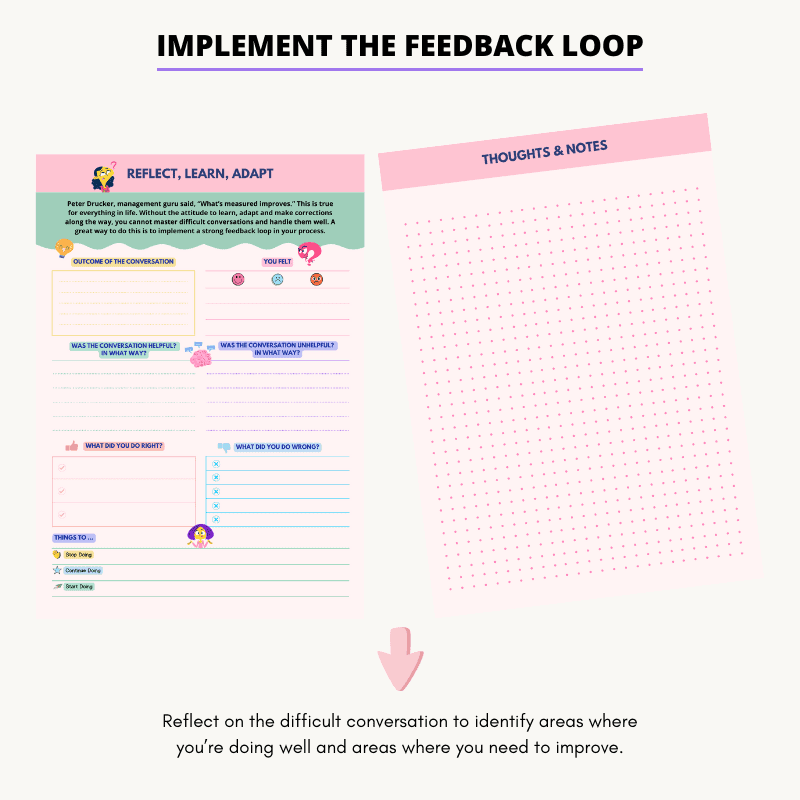
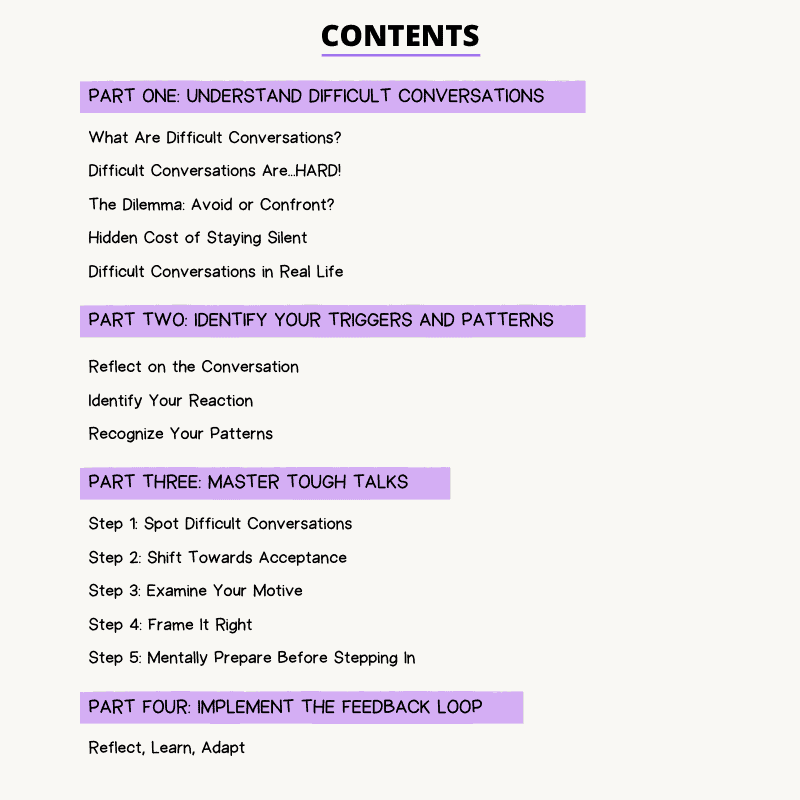
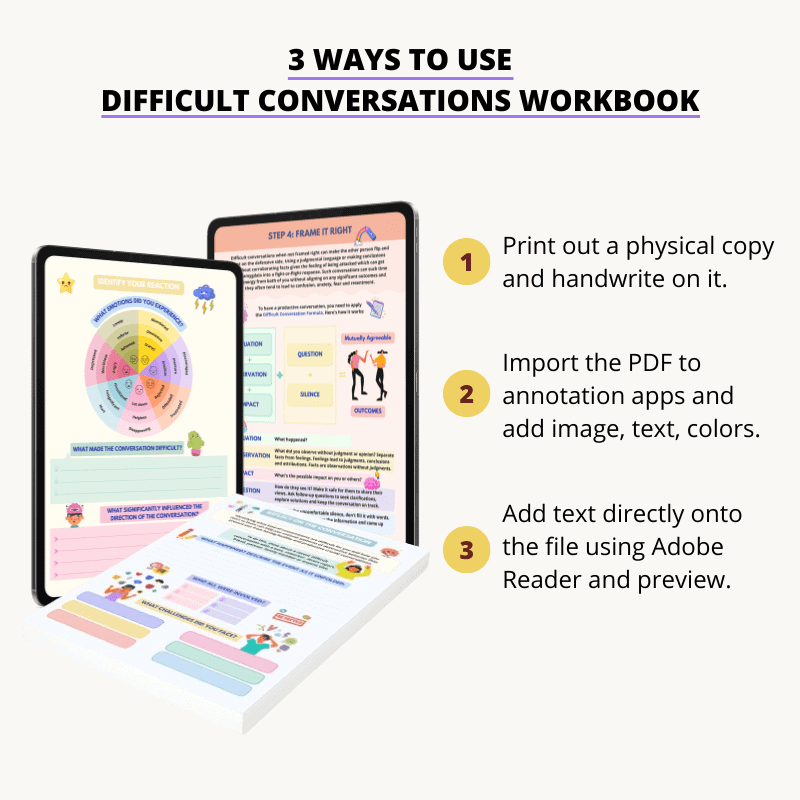
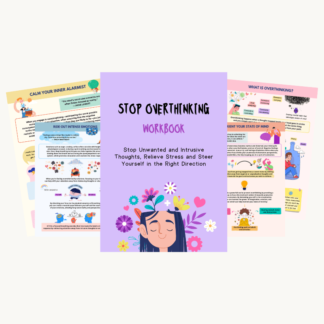
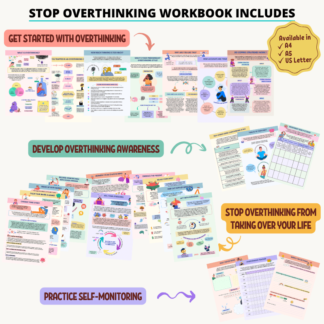
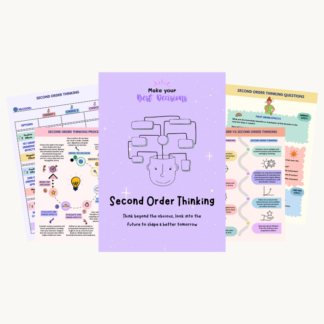
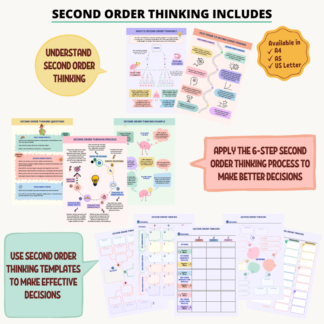




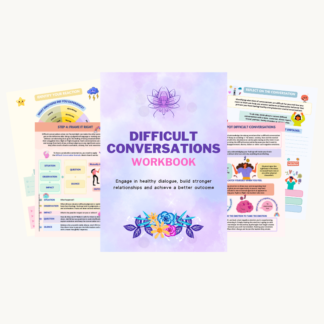
Reviews
There are no reviews yet.